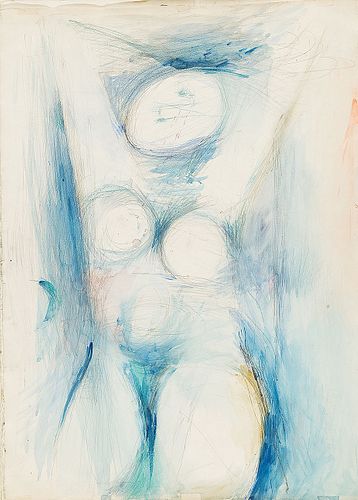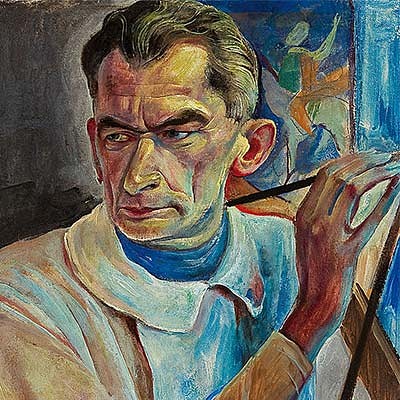ERNST PAAR*, BUNDLE 5 PIECES (Graz 1906 - 1986 Vienna)
Lot 263
Estimate:
EUR€1,000 - EUR€2,000
$1,075.27 - $2,150.54
Absentee vs Live bid
Two ways to bid:
- Leave a max absentee bid and the platform will bid on your behalf up to your maximum bid during the live auction.
- Bid live during the auction and your bids will be submitted real-time to the auctioneer.
Bid Increments
| Price | Bid Increment |
|---|---|
| EUR€0 | EUR€10 |
| EUR€100 | EUR€50 |
| EUR€700 | EUR€100 |
| EUR€1,000 | EUR€200 |
| EUR€3,000 | EUR€300 |
| EUR€3,600 | EUR€400 |
| EUR€4,000 | EUR€500 |
| EUR€7,000 | EUR€1,000 |
| EUR€16,000 | EUR€2,000 |
| EUR€30,000 | EUR€3,000 |
| EUR€36,000 | EUR€4,000 |
| EUR€40,000 | EUR€5,000 |
| EUR€150,000 | EUR€10,000 |
About Auction
By Widder Auctions
Nov 28, 2022
Set Reminder
2022-11-28 10:00:00
2022-11-28 10:00:00
America/New_York
Bidsquare
Bidsquare : Viennese Art Nouveau, Expressionism, Modern Art
https://www.bidsquare.com/auctions/widder-auctions/viennese-art-nouveau-expressionism-modern-art-10414
Widder Auctions office@widderauktionen.com
Widder Auctions office@widderauktionen.com
- Lot Description
ERNST PAAR*, BUNDLE 5 PIECES
(Graz 1906 - 1986 Vienna)
Lying Nude and 4 other motifs
mixed media/paper, 77.4 x 56.2 cm
verso estate stamp Ernst Paar 1906 - 1986
provenance: estate of the artist, private collection Vienna
ESTIMATE Euro 1.000 - 2.000
STARTING PRICE Euro 1.000
The Austrian painter and graphic artist Ernst Paar was a member of the Hagenbund and a founding member of the artists' association "Der Kreis". Initially a working student at the Stuttgart Academy of Fine Arts, he studied in the drawing class of Hans Spiegel from 1926- 1927. In 1927 he moved to Berlin for a short time. In addition to his day job as a lithographer, he created watercolors and paintings, including two for the synagogue in Graz, which was burned down by the Nazis in 1938, and met Wilhelm Thoeny. 1930 -1931, Paar studied in Paris with Hans Stockbauer at the Académie Julian. In 1932 he became a member of the Secession Graz and exhibited for the first time (backyards, factories and cityscapes). In 1933 he moved to Vienna and became an active member of the Hagenbund. In 1933-1934 he created cubist-abstract paintings. In his involvement with Cubism, he ranks among the most important artists in Austria, along with Alfred Wickenburg, Georg Pevetz, Hans Stockbauer, Kurt Weber and Grete Wilhelm. A joint work from May 1934 with Rudolf Pointner, Franz Senkinc, Otto Rudolf Schatz and Franz Schacherl in the latter's "Hausbuch", and a page designed by him from November 19, 1935, allow conclusions to be drawn about his circle of friends and his attitude critical of the regime. Rudolf Pointner and Franz Schacherl knew Ernst Paar from Graz and Otto Rudolf Schatz lived next door to him. Between 1934-1936 Ernst Paar turned to the New Objectivity. He oriented himself to artists such as Max Beckmann. In 1935 he received the silver medal of the city of Graz for painting. In 1936 Ernst Paar was a member of the Hagenbund's hanging commission for the "Special Exhibition of Styrian Children's Art", put together by Friedrich Aduatz. Paar also participated in an exhibition in Brussels in 1936. At the 73rd Hagenbund exhibition in 1937 an entire hall was dedicated to Paar (still lifes and landscapes). After the Anschluss he maintained friendly contact with opponents of the regime such as Otto Rudolf Schatz, Karl Wiener and Margret Bilger. In 1942 he was employed as a "freelancer" (Dienstverpflichtet) in the Institute for Exhibition Technology and Image Statistics of the "South-East Europe Society". In 1942 he exhibited in Vienna at the Galerie Welz (formerly Wuerthle) in a group exhibition that was banned four days after the opening. The reason was stylistic deviations in the direction of Expressionism, which was one of the "degenerate art movements". Apart from Paar, Hans Fronius, Oberhuber, Stockbauer, Fritz Silberbauer, Rudolf Szyszkowitz, Alois Thum and Wickenburg participated. After being a prisoner of war, he participated in exhibitions at home and abroad as a member of the re-established Secession Graz from 1946. In June 1946 he was a founding member and from 1948 to 1950 president of the artists' group "Der Kreis" (Greta Freist and Gottfried Goebel as well as Hans Stockbauer, Arnulf Neuwirth, Karl Prantl, Josef Schagerl, Hubert Fischlhammer) in Vienna. In 1948 he took up an assistant position at the Academy of Fine Arts in Vienna, but was soon dismissed for political reasons. Solo exhibition at the Wuerthle Gallery in Vienna, exhibitions in Prague and Brno from and solo exhibition in Bengtfors in Sweden. 1950 Personale at the Neue Galerie Graz and 1954 in Linz. He was involved in the design of many major thematic exhibitions in Vienna until the 1950s, e.g. "Wien baut auf" and Gewerbeausstellung 1951, where his friends Heribert Potuznik and Hans Stockbauer were his collaborators. In 1951 he resigned from the Professional Association of Fine Artists of Austria, having become a member of the Federation of Modern Fine Artists of Austria. Albert Paris Guetersloh was chairman, Paar was one of the deputies with Carry Hauser and Gustav K. Beck. The Federation was founded as a reaction to the attacks on the representatives of modern art by the ART CLUB, the "Kreis", the Secession Graz and other progressive associations. In 1950 Paar exhibited graphic art and painting in the Neue Galerie in Graz. In 1951 he organized an exhibition of small format works (including Friedensreich Hundertwasser) in the Leykam Passage in Graz. In 1952 Paar executed two large sgraffiti for the municipality of Vienna. In 1953 he won 1st prize in the competition for the poster for the Vienna Festival Weeks. In 1955 he participated in the large exhibition "10 years of painting and sculpture in Austria" at the Kuenstlerhaus and exhibited at the Zeno Gallery in Zurich and in Victoria, Canada. 1956 Personal exhibition at the "Neue Galerie" in Vienna. In the visitors' book entries by Theodor Sapper and Axl Leskoschek, which suggests an old friendship. In May In June 1956, the Neue Galerie am Joanneum in Graz presented him in a group exhibition. In September 1956, on the occasion of his 50th birthday, he had a large personal exhibition at the Vienna Kuenstlerhaus as part of the artists' group "Der Kreis"; the Federal Ministry for Education purchased the painting "Ansicht von Paris" for the Austrian Gallery, and the Albertina acquired watercolors. 1963 Theodor Koerner Prize. 1965 Prize of the City of Vienna for Applied Arts. Paar created mosaics and sculptures for the municipality of Vienna. In 1970 he designed a mural for the retirement home in Doebling.
PLEASE NOTE:
The purchase price consists of the highest bid plus the buyer's premium, sales tax and, if applicable, the fee of artists resale rights. In the case of normal taxation (marked #), a premium of 24% is added to the highest bid. The mandatory sales tax of 13%, for photographys 20%, is added to the sum of the highest bid and the buyer's premium. The buyer's premium amounts to 28% in case of differential taxation. The sales tax is included in the differential taxation. - Shipping Info
-
We will send you the invoice shortly after the auction. As soon as we have recieved the amount, the art can be picked up at Johannesgasse 9-13, 1010 Vienna. Please note that the buyer is responsible for pick-up and shipping of the lot. Should you wish to ship your items, please contact: Mailboxes Email: oper@mbe-co.at Tel: 01 5128855 Please note that storage fees may apply, should the pieces not be picked up within 14 days after invoicing for domestic and 28 days for international transportation. Our team will be happy to assist you with any further information at office@widderauktionen.com or at 0043 676 555 66 10.
-
- Buyer's Premium



 EUR
EUR CAD
CAD AUD
AUD GBP
GBP MXN
MXN HKD
HKD CNY
CNY MYR
MYR SEK
SEK SGD
SGD CHF
CHF THB
THB

















